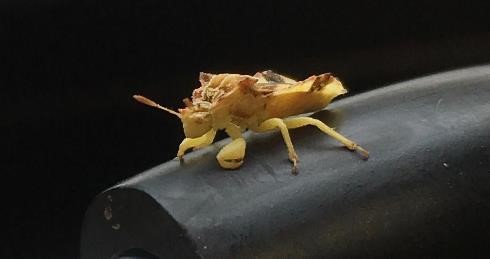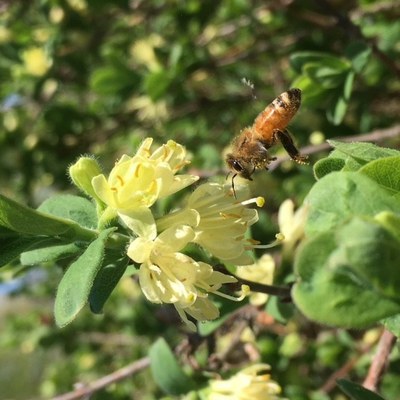Good Bugs II: Farming with Native Beneficial Insects for Pest Control
The Carrington REC is hosting the program Good Bugs II on Thursday, August 16th, 8:00 a.m. - 4:30 p.m. (and in Grand Forks on August 15th). It will be both an overview and have some specific information on beneficial insects and the habitat they require. Insects include pollinators, but also predators for crop pests. We will discuss what both homeowners and farmers can do to increase or improve the necessary habitat.
Register here: http://www.ndswcs.org/news.htm!
We hope to reach gardeners/homeowners, farmers, ranchers, certified crop advisors and Extension agents. If you enjoy insects as much as I do, and hate pests – this workshop is for you! (Of course, you can always forward to your buggy friends.) There are a lot of simple things we can do in our local environment to help insect communities.

1: Friend or Foe? -Ambush Bug
At the CREC orchard, we have a great plain of dandelions just south of the orchard and many more within the fence. These, along with willows in the shelterbelt, provide very-early spring food sources for bees and warblers. Half the fenced area is old tree trials that burst into bloom in mid-summer with clovers and alfalfa. After Field Day, I stop mowing the orchard and let the clovers get going for fall flowers. Over the past 4-5 years, I feel like I really see a lot more birds nesting and good numbers of wild bees and syrphid flies. We find several kinds of beneficial wasps, too. I could still use more early bumble bees though.
Conservation biological control is a science-based pest management strategy that seeks to integrate beneficial insects back into cropping systems for natural pest control, ultimately reducing and in some cases eliminating the need for pesticides. Participants will learn how common farm practices can impact beneficial insects and how to assess and create farm habitat for beneficial insects.

2: Friend or Foe? -Katydid Nymph
The Good Bugs II meeting is put on by Xerces Society, SCD, NRCS and Extension. Its real name is “Farming with Beneficial Insects for Pest Control” but we are going with Good Bugs II. Hope to see you there!

3. Friend or Foe? -European Honey Bee
Answers to the Friend or Foe questions below:
- Ambush bugs are smaller, heavier-bodied cousins to assassin bugs but instead of stalking other insects, they wait motionless for their prey to wander near. The ambush bug seizes the insect with its powerful forelegs and quickly dispatches it with a stab from its sharp beak. Ambush bugs eat everything that walks by, so they eat insects both harmful and helpful to plants.
- Katydids include members that eat both plant parts (leaves, flowers, seeds) and that are exclusively predatory on other insects or snails. So, they are both friend and foe. However, the one pictured here is a plant eater – so probably a foe.
- Honey Bees are tricky. They are friends to humans since we get economic gain from their work. However, they are foes of other wild bees, the ones most helpful to pollinating the world around us. Honey bees strip nectar and pollen early in the day leaving little for their wild cousins. In addition, they may carry diseases that can be transmitted to wild bees just by visiting the same flowers.
Kathy Wiederholt
kathy.wiederholt@ndsu.edu
Fruit Project Manager


